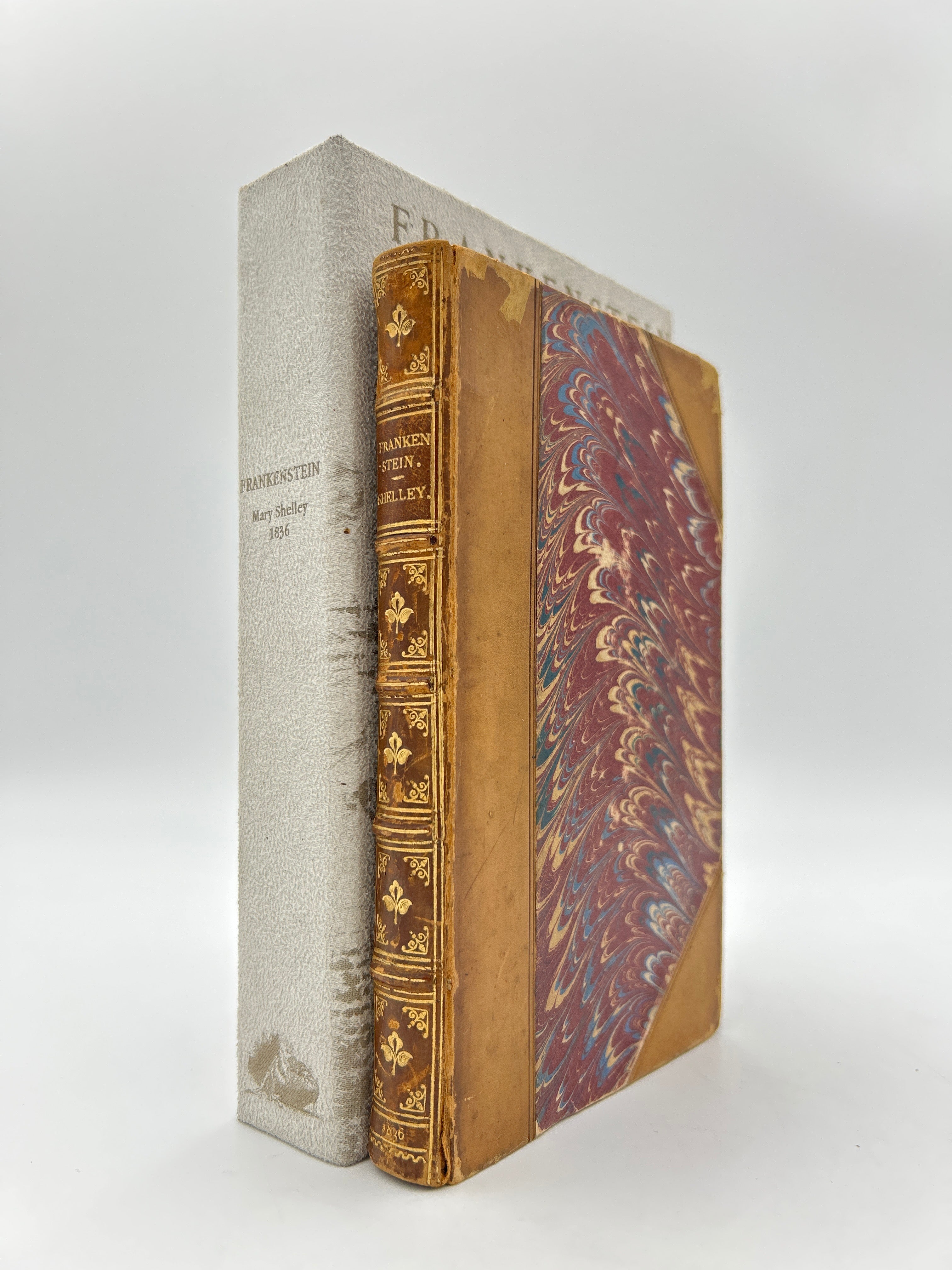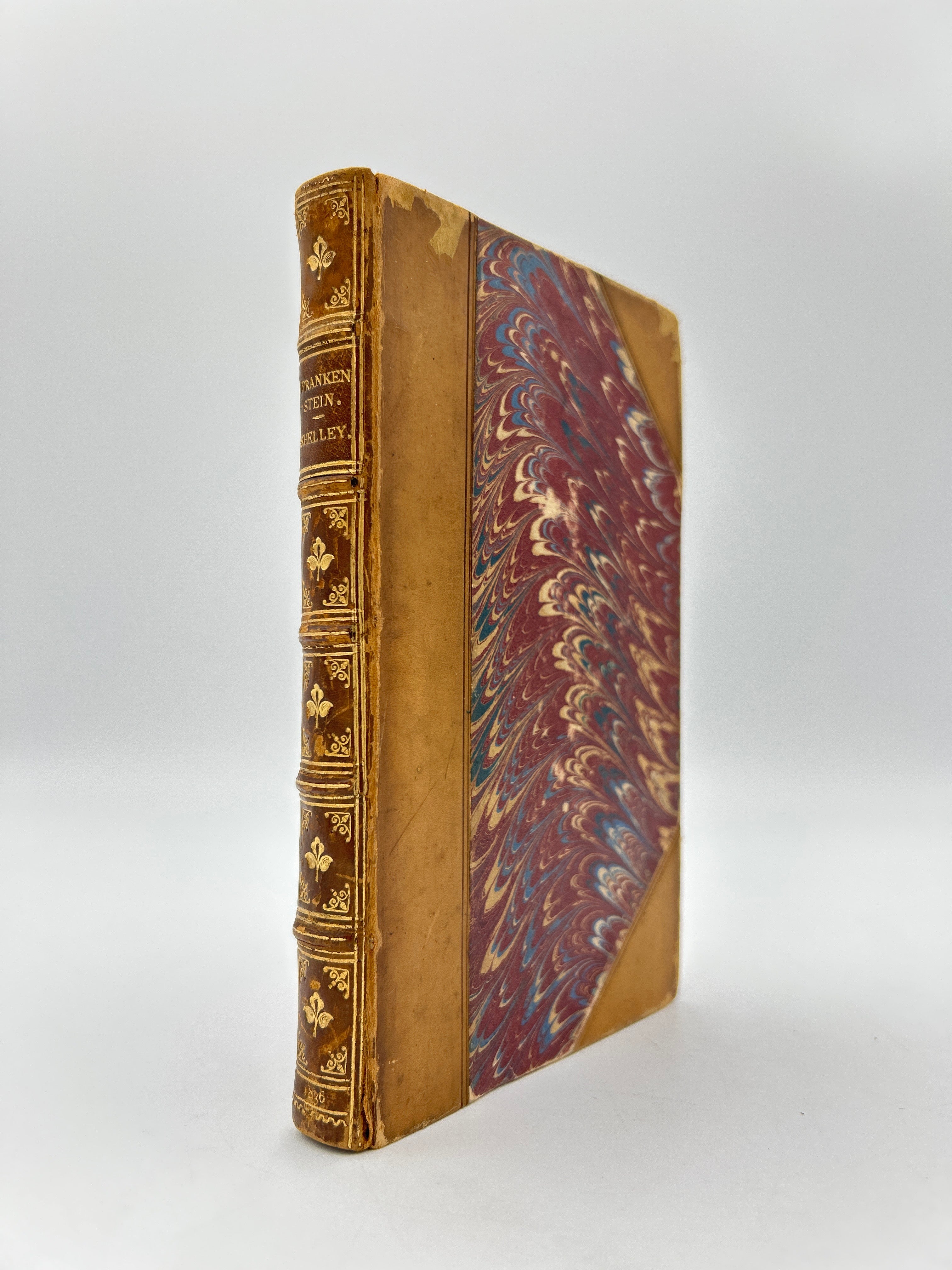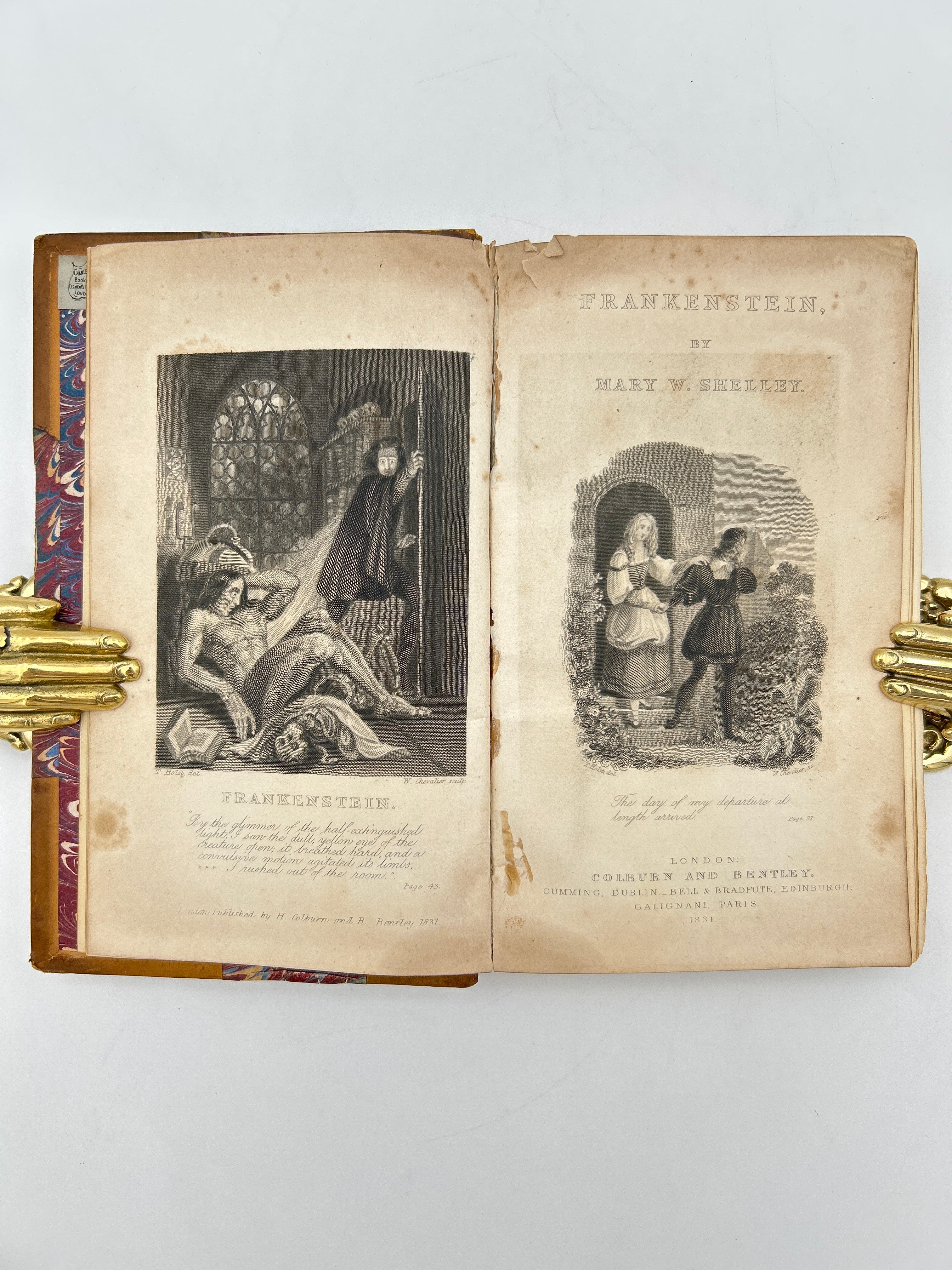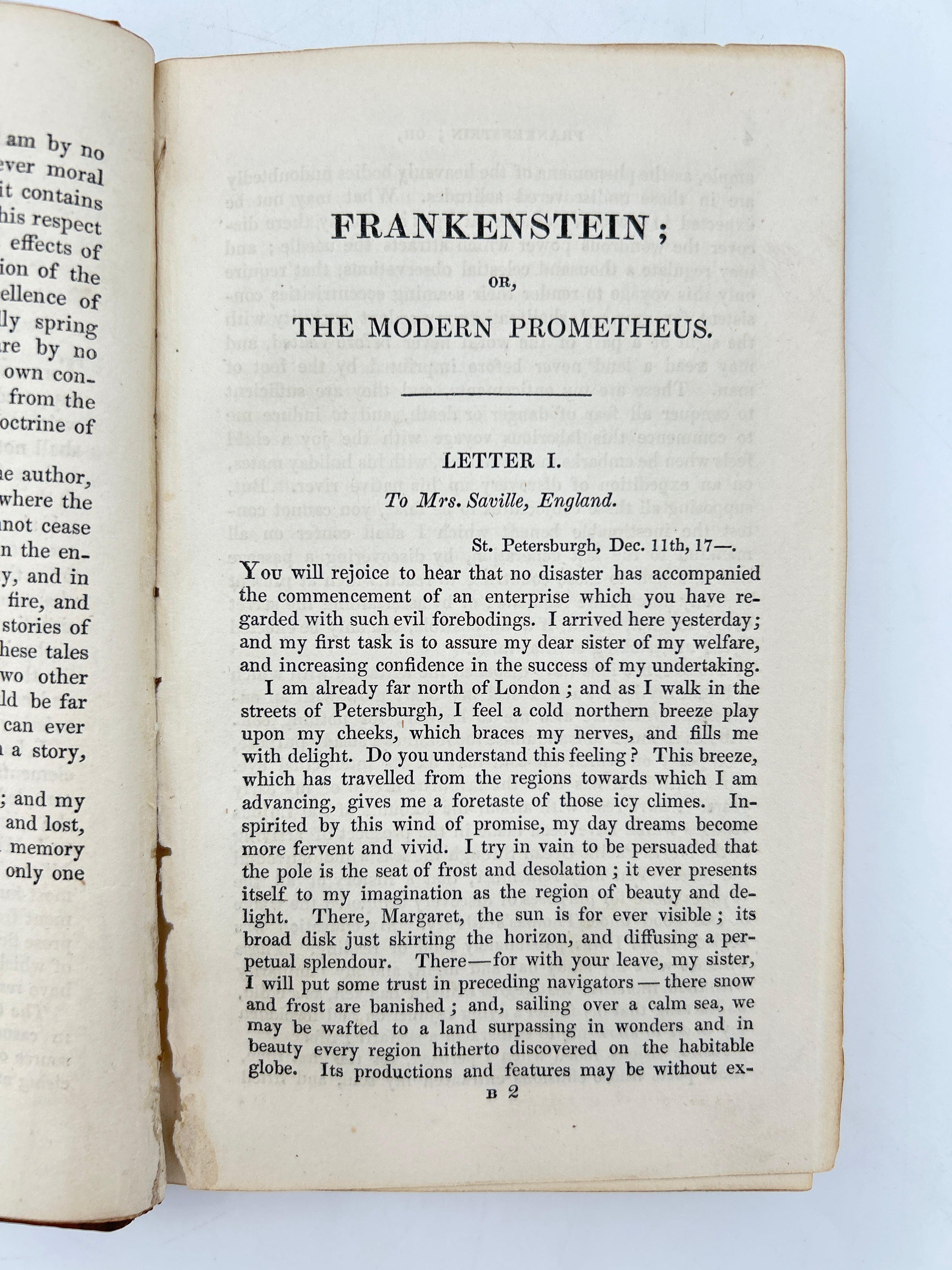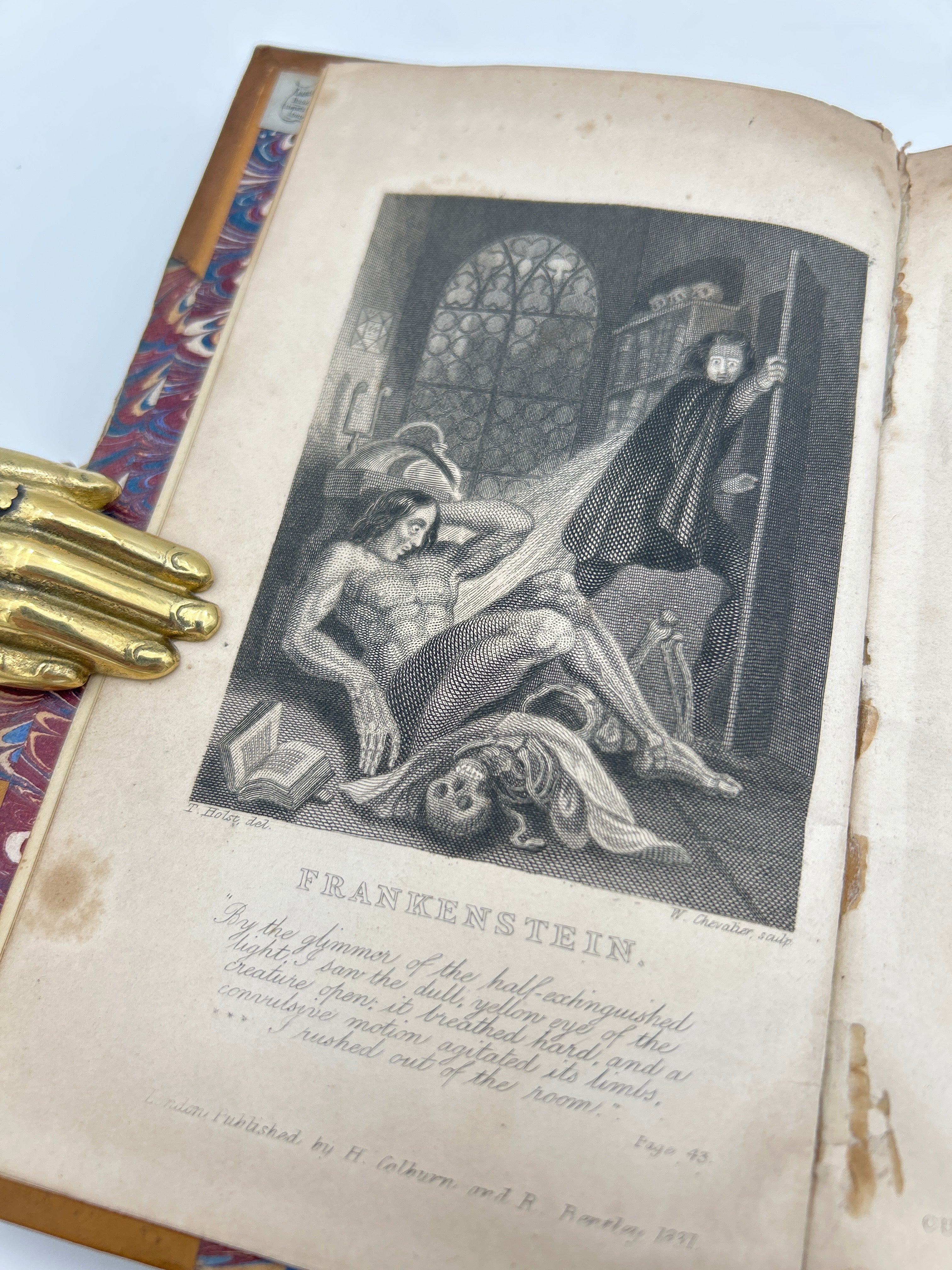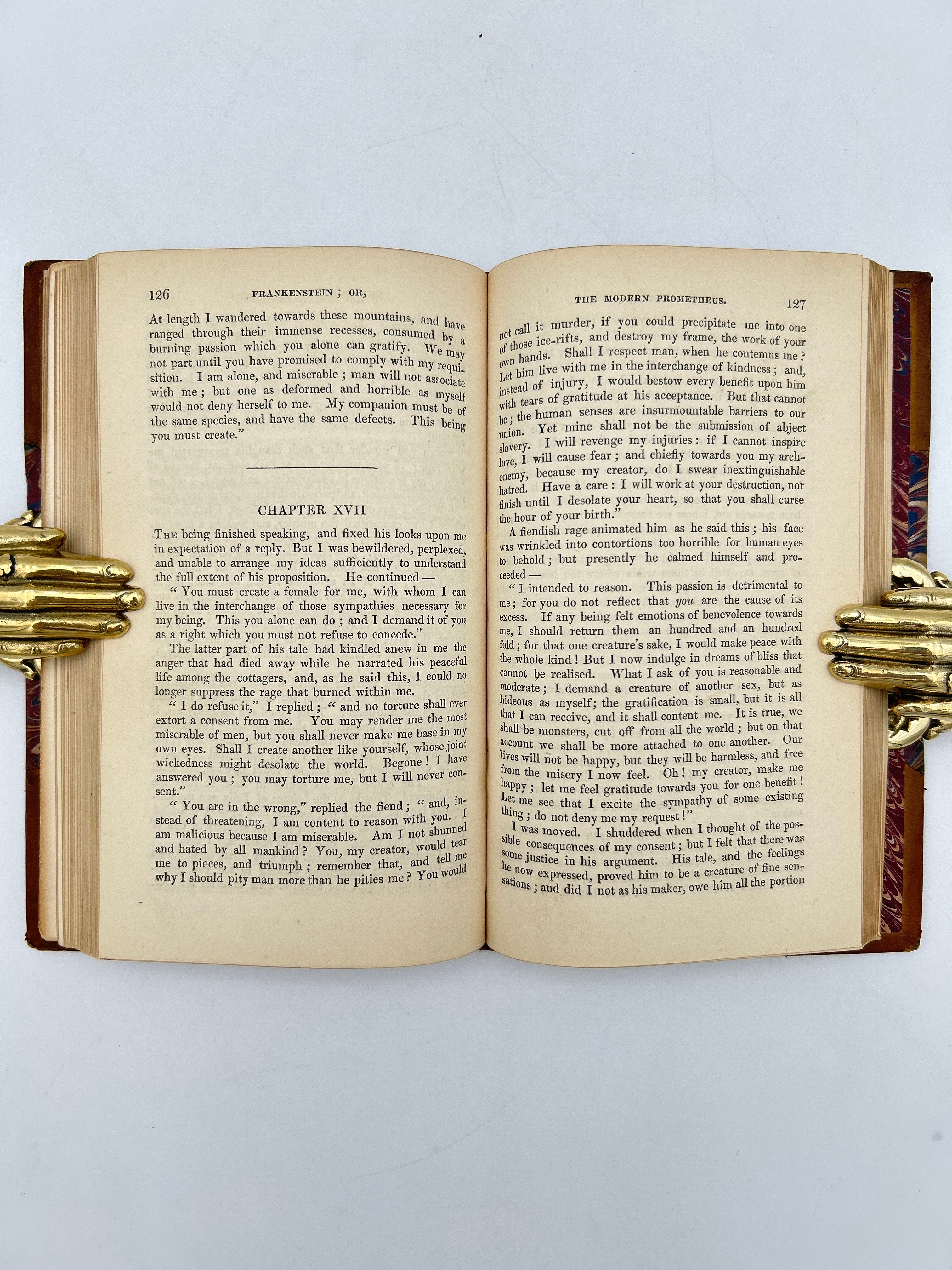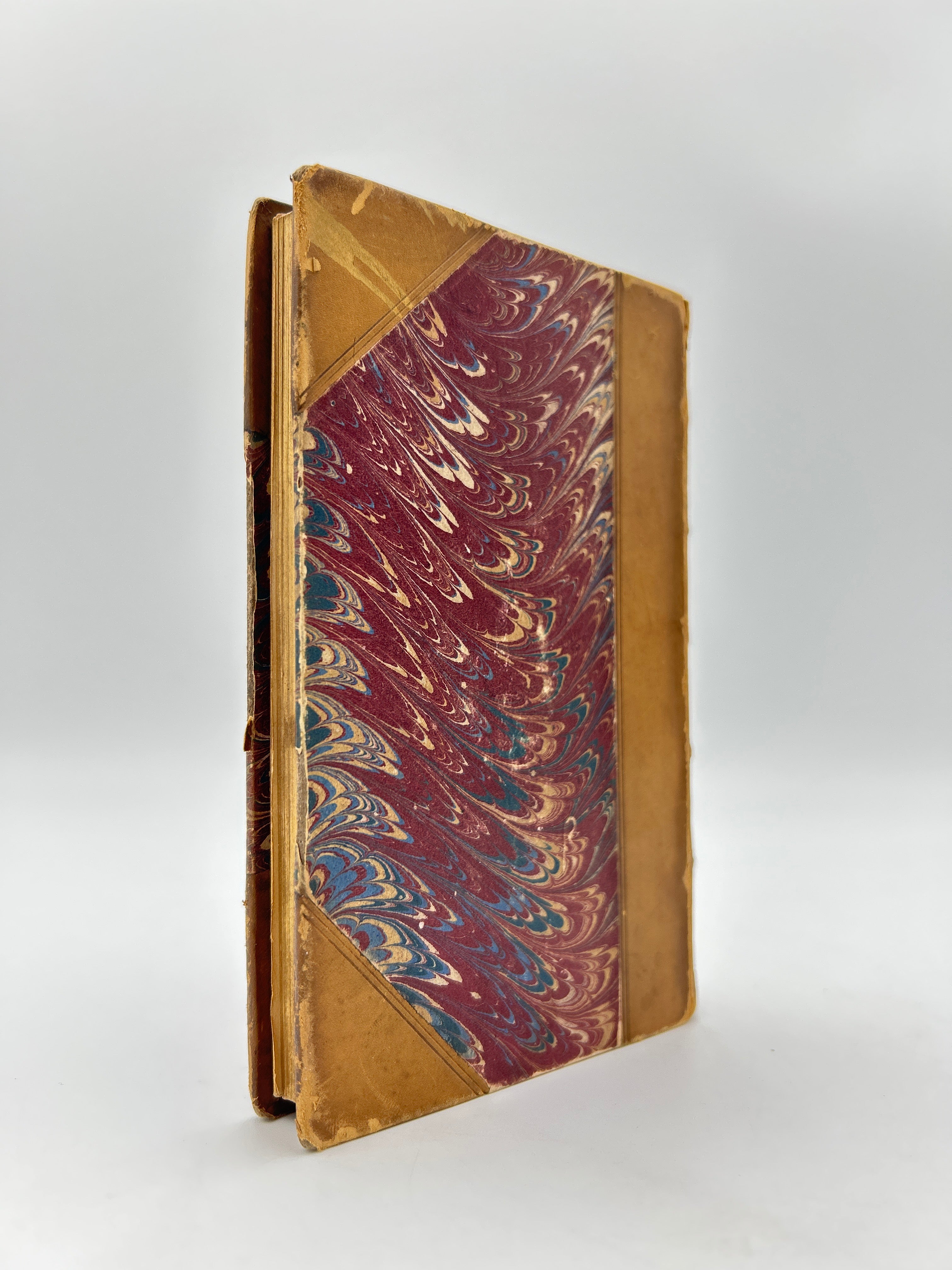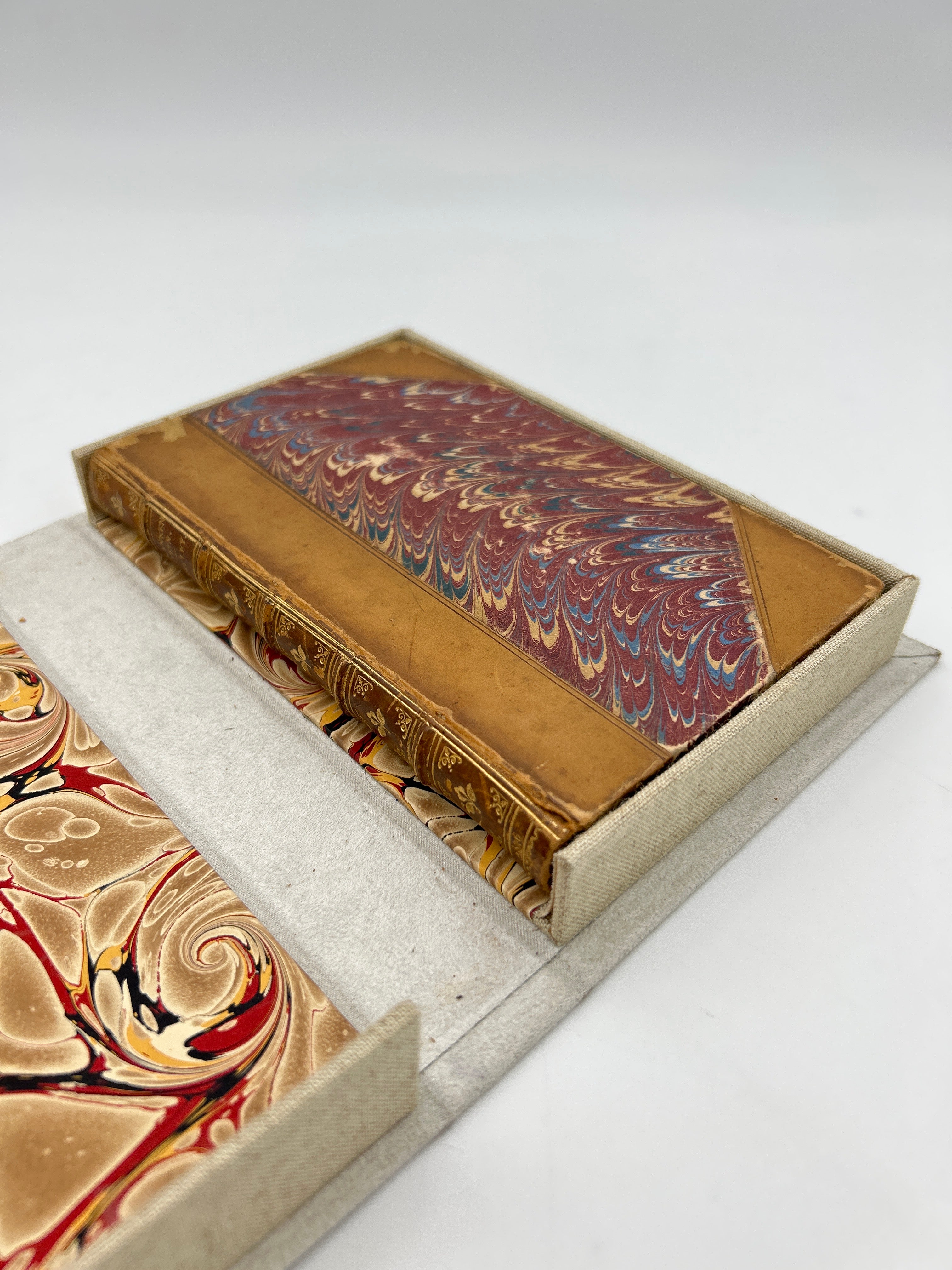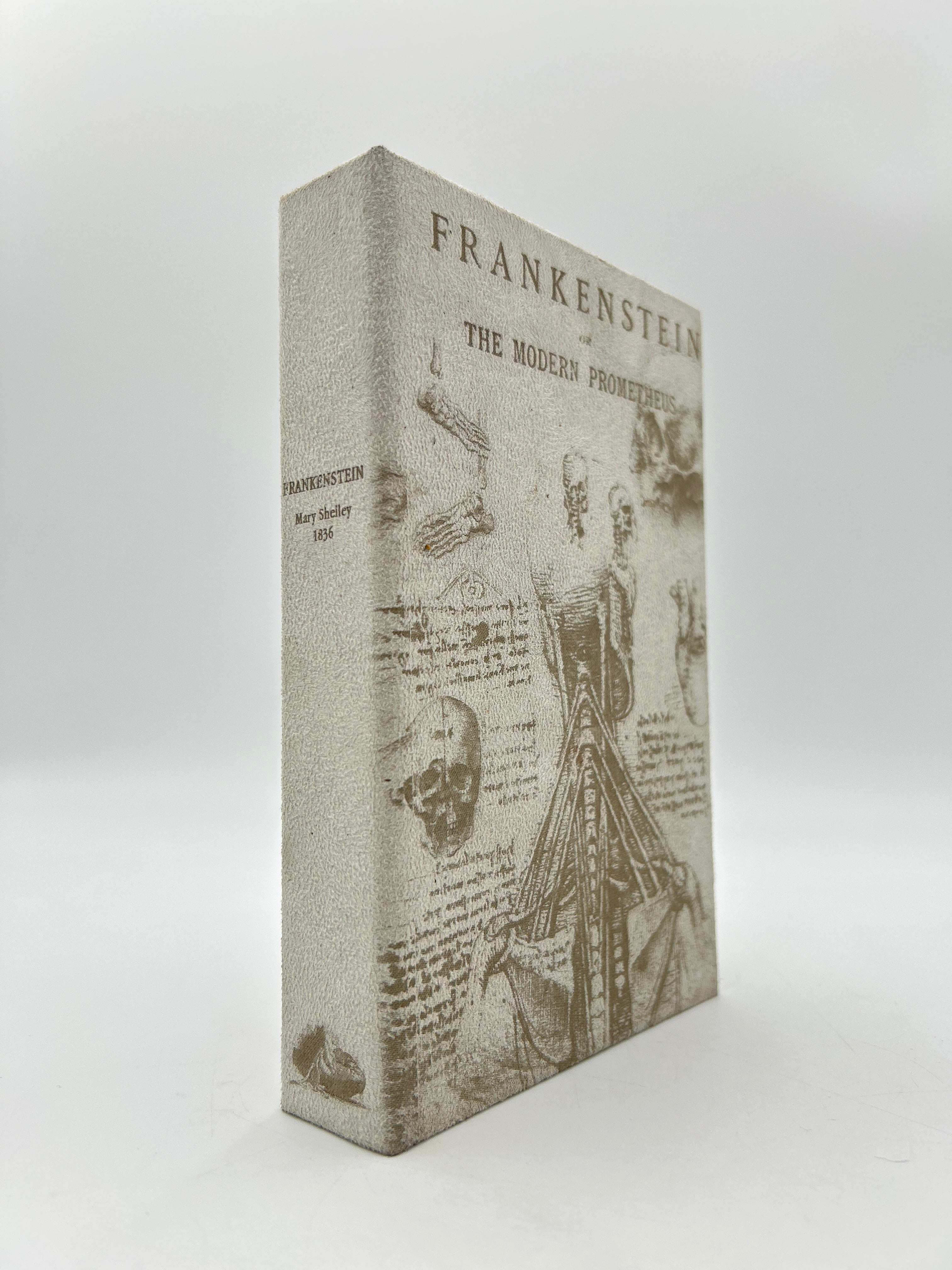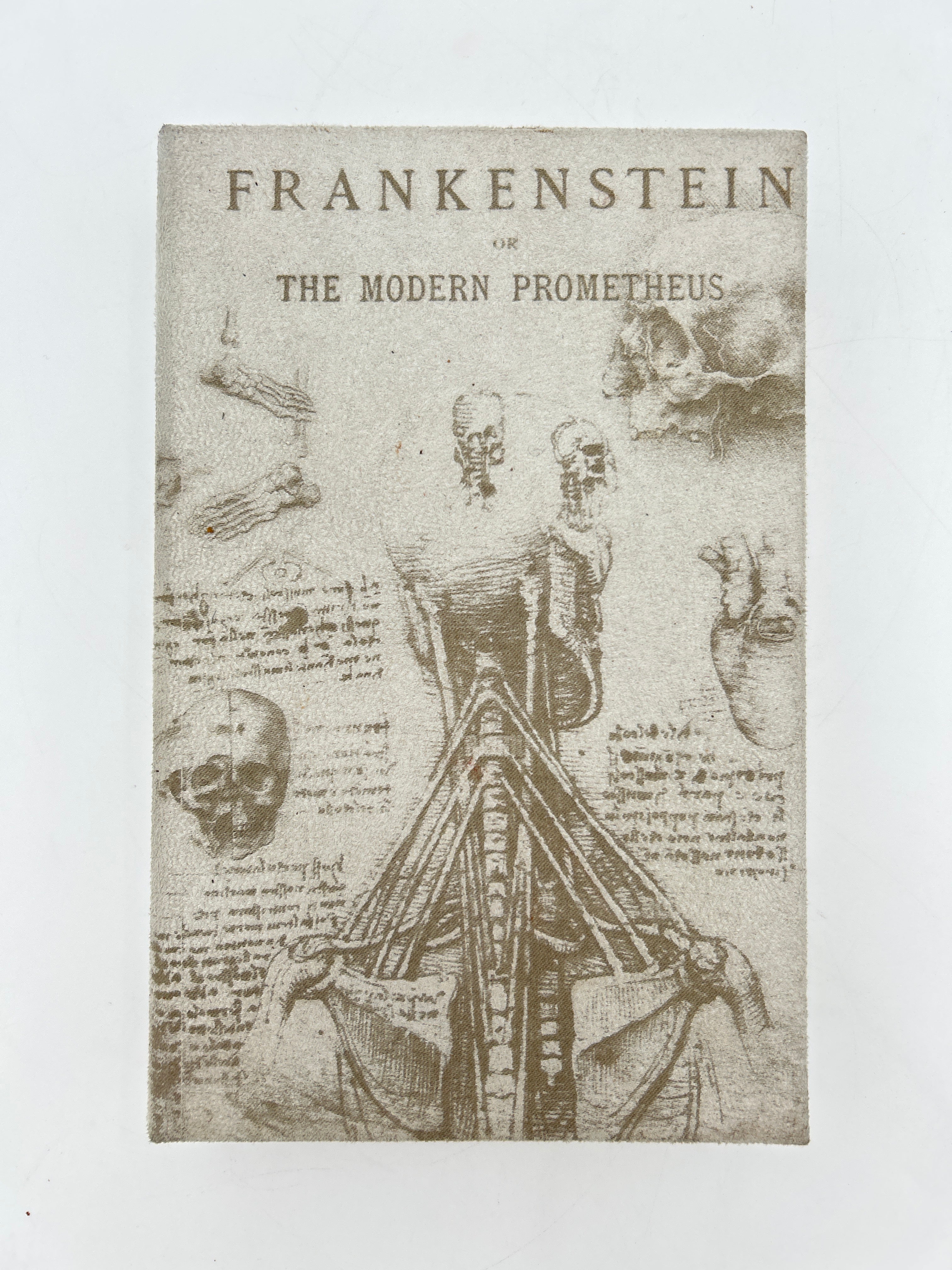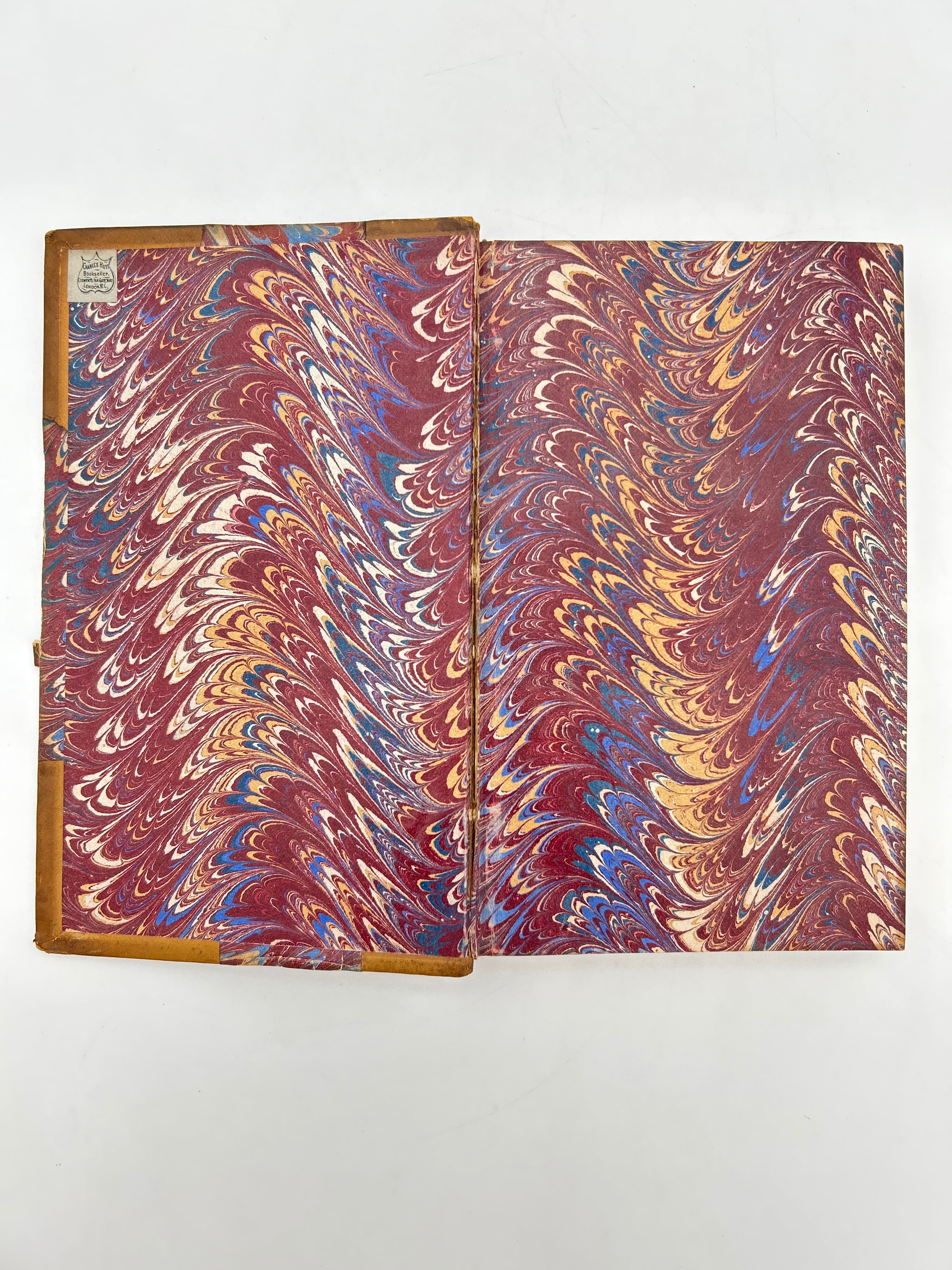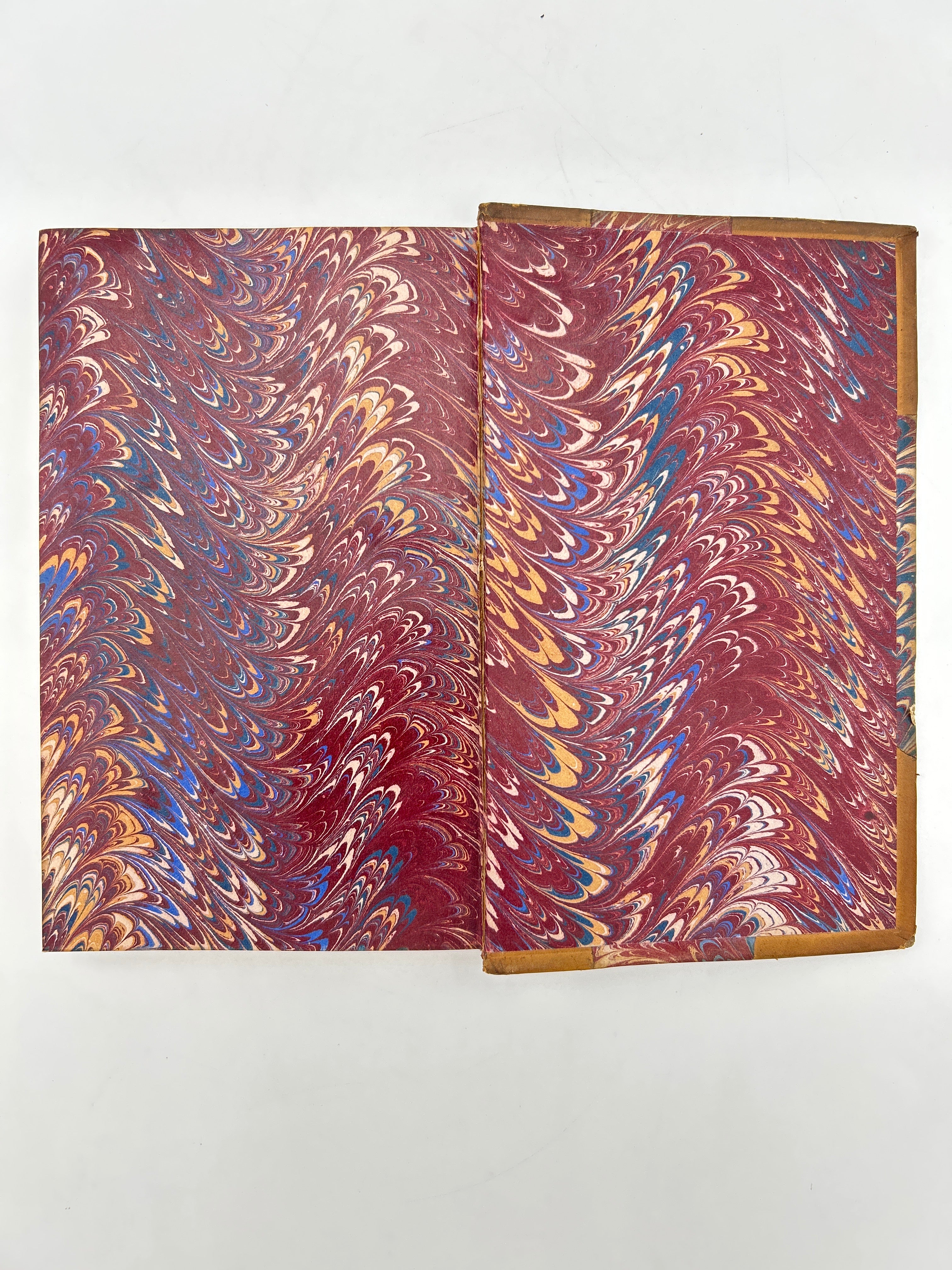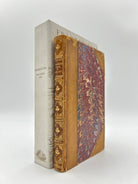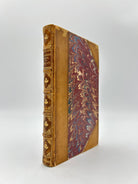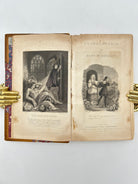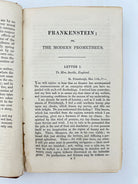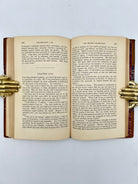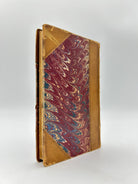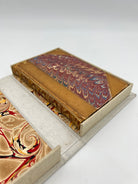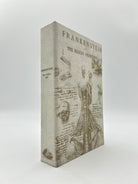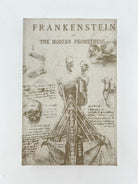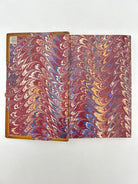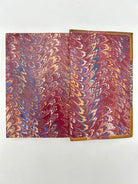Frankenstein 1831
Couldn't load pickup availability
5b Mary Shelley, London: Colburn and Bentley, 1831. Third Edition. First Illustrated.
Notes
Frankenstein; or, The Modern Prometheus (1818) by Mary Shelley is a Gothic and early science fiction novel that tells the story of Victor Frankenstein, a young scientist who creates life from dead matter—only to recoil in horror from his own creation. The creature, intelligent yet rejected, turns vengeful after being shunned by humanity, leading to tragedy for both creator and creation. The novel was conceived during the famous summer of 1816 at Lake Geneva, when Mary, her lover Percy Bysshe Shelley, Lord Byron, and John Polidori challenged one another to write ghost stories during a spell of stormy weather. Mary’s idea arose from a waking dream of a man “kneeling beside the thing he had put together.” She completed the first draft at just 18, and Frankenstein was published anonymously in 1818, with a revised edition under her name appearing in 1831.
Mary Wollstonecraft Shelley (1797–1851) was the daughter of two intellectual radicals—Mary Wollstonecraft, the pioneering feminist author of A Vindication of the Rights of Woman, and William Godwin, a political philosopher. Orphaned young and raised in a circle of writers and thinkers, she eloped at 16 with poet Percy Bysshe Shelley. Her life was marked by passion, loss, and resilience: she endured the deaths of her husband and several of her children, yet continued to write prolifically. Beyond Frankenstein, she authored novels such as The Last Man and Valperga, exploring themes of creation, isolation, and humanity’s hubris. Today, she is recognized as a visionary who bridged Romanticism and modern science fiction, forever reshaping how we imagine the boundaries between life, death, and creation.
The third edition of Frankenstein, published in 1831 by Henry Colburn and Richard Bentley as part of their Standard Novels series, is the most famous and influential version of Mary Shelley’s novel—and the first illustrated edition. This edition included five engraved plates by artist Theodore Von Holst, making it the first time readers saw visual interpretations of Victor Frankenstein and his Creature. These illustrations helped cement the novel’s Gothic imagery and shaped how the public imagined the story for generations.
Mary Shelley also took the opportunity in 1831 to substantially revise the text. She softened some of the more radical ideas of the 1818 edition, added a more reflective and fatalistic tone, and expanded the frame narrative, including a new introduction where she explained the story’s famous origin at Lake Geneva. The 1831 edition emphasized themes of fate, divine punishment, and moral responsibility, reflecting the personal losses and maturity she had experienced since writing the original. For many readers and scholars, this is the “canonical” version—the one that firmly established Frankenstein as a cornerstone of both Gothic literature and early science fiction.
Description
Three quarter calf with marbled boards. Five raised bands with gilt ornamentation in each compartment and lettering in the second. Rubbing to the extremities and some minor tearing to sheen of leather on upper edge and corners. All edges gilt. Marbled endpapers. Five engraved plates by artist Theodore Von Holst. With custom made clamshell box with laser engraved cover. Fine condition overall.
